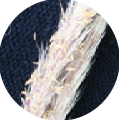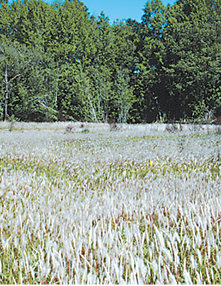Mississippi’s 10 Worst Invasive Weeds
Mississippi is being silently invaded by exotic plant species. These weeds are not just garden nuisances; they are changing the way natural areas function, and they are costing all of us money. Your tax dollars pay to fight the disruptive spread of these plants. Also, tax revenues are lost when plants such as kudzu invade forested timberlands.
This invasion has gained momentum since the last century when many of these plants were first imported or accidentally introduced. It is estimated that millions of acres in the United States are already affected by invasive exotic plants. This acreage increases annually by an area twice the size of Delaware. Almost 20 percent of the plant species in Mississippi forests, parks, refuges, and other open spaces are not native to our state. Some of these exotic plants have few natural constraints and can soon dominate a landscape.
The 10 weeds described here are biological pollutants that crowd out native plants, degrade wildlife habitat, and threaten many endangered species. Many of these plants are familiar sights in our landscapes. All of them threaten Mississippi’s biological diversity.
Jio
(Commelina benghalensis)
Also called Benghal dayflower or tropical dayflower, this perennial plant is native to Africa and tropical Asia.
Jio appeared in Florida in 1928 and in Mississippi in 2006. It is becoming a serious pest in south Mississippi, where it invades cultivated, fertile fields planted to cotton, peanuts, corn, soybeans, and vegetables. This weed flowers above- and belowground. Red hairs at the base of the leaf stem are important for identification.

Chinese Tallow
(Triadica sebifera)
Chinese tallow is frequently called popcorn tree. Native to eastern Asia, it was imported to South Carolina in the late 1700s by Benjamin Franklin for soap tallow.
The colorful fall foliage and rapid growth of Chinese tallow make it popular as a landscape tree. It reproduces easily, spreads quickly, and is difficult to control because of its long taproot. It is a popular nectar source for honeybee producers. For more information, see MSU Extension Publication 3189.
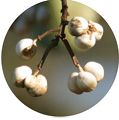
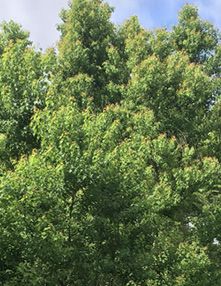
Kariba Weed
(Salvinia molesta)
Kariba weed is also called giant salvinia. Native to southern Brazil, it is believed to have been introduced to the U.S. for the ornamental trade.
Kariba weed is a free-floating aquatic plant that forms dense mats on the surface of lakes, ponds, and rivers. Kariba weed will not survive in terrestrial habitats. This plant is easily distinguished from related species of salvinia by the eggbeater-shaped hairs found on the upper surfaces of its foliage.
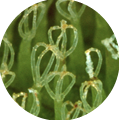
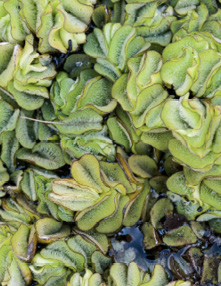
Waterthyme
(Hydrilla verticillata)
Also called hydrilla, this perennial aquatic plant is native to warm regions of Asia. It was most likely introduced into the U.S. in conjunction with the tropical fish trade.
Classified as a federal noxious weed in 1974, this completely submersed plant takes root in sediment in ponds, lakes, and rivers. The most frequently observed form of spread is as a contaminant on boats and boat trailers. Native aquatic plants that are vital for fish and other marine life habitat are completely displaced once waterthyme invades.
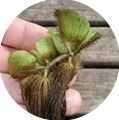
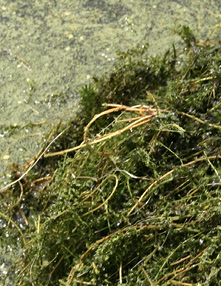
Cogongrass
(Imperata cylindrica)
Native to Southeast Asia, cogongrass arrived accidentally as packing material into Mobile Bay, Alabama, in the early 1900s. It was later promoted as a forage grass, as an ornamental, and for soil stabilization.
Classified as the seventh worst weed in the world, cogongrass is hardy and tolerant of shade, high salinity, and drought. It forms dense mats that crowd out native vegetation and forage plants and displace ground-nesting species, such as turkeys, bobwhite quail, and the gopher tortoise. It can alter the natural fire regime by causing hotter and more frequent fires. For more information, see MSU Extension Publication 3190.
Brazilian Satintail
(Imperata brasiliensis)
Brazilian satintail is native to Mexico, Brazil, and Argentina. It is not known to be in the U.S. outside of southern Florida.
Brazilian satintail can be distinguished from cogongrass only while plants are in the early stages of flowering when anthers are exposed and visible (anthesis). Cogongrass florets have two stamens (anthers with filaments), while Brazilian satintail florets have only one. All other morphological features of Brazilian satintail and cogongrass are identical.
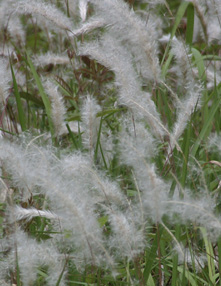
Kudzu
(Pueraria montana)
Native to Japan and Asia, kudzu was showcased as an ornamental at the Philadelphia Centennial Exposition in 1876. In Mississippi, it was planted as forage and to control soil erosion in the last half of the 19th century and the first half of the 20th century.
No list of Mississippi weeds would be complete without the “plant that ate the South.” During summers, kudzu grows up to a foot a day, covering trees, buildings, fences, and anything stationary. Kudzu damages structures and eventually kills trees and understory growth. This vine has caused more than $100 million in damages. For more information, see MSU Extension Publication 3187.
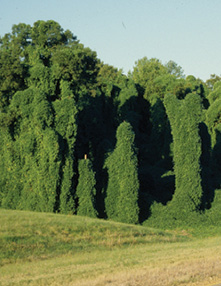
Tropical Soda Apple
(Solanum viarum)
Tropical soda apple is native to Brazil and Argentina and was first recorded in the U.S. in Glades County, Florida, in 1988.
Within 7 years of its arrival, tropical soda apple invaded an estimated 1 million acres in five southern states and Puerto Rico. It spreads by interstate movement of cattle, hay, and composted manure from infested areas. This prickly plant replaces edible forage plants and hampers livestock and wildlife movement. It is a serious threat for vegetable growers, livestock producers, and land managers. For more information, see MSU Extension Publication 3200.
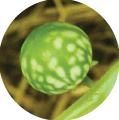
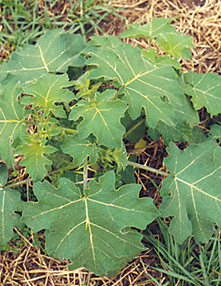
Itchgrass
(Rottboellia cochinchinensis)
Introduced from India, this annual grass can reach 13 feet in height. It invades cultivated and noncultivated sites that get adequate sunlight. Itchgrass prefers heavier rather than sandy soils.
Itchgrass leaves and leaf sheaths (pictured) are densely covered with short, stiff hairs that can penetrate the skin and cause irritation. It produces abundant seeds that shatter at maturity onto soil and mowing and harvesting equipment, which facilitates dispersal. Previous research seems to indicate both dormant and nondormant seeds are produced on itchgrass plants, making control more difficult. For more information, see MSU Extension Publication 3186.
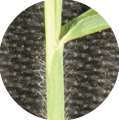
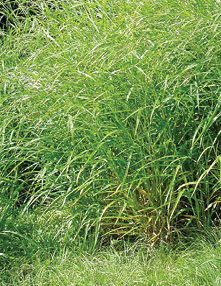
Torpedograss
(Panicum repens)
Torpedograss is an erect perennial grass that spreads primarily by rhizomes. It prefers well-drained, sandy soils but can tolerate drought as well as standing water. It is relatively short at a reported maximum height of less than 3 feet.
The rhizomes may extend more than 20 feet from the mother plant and can persist through extended periods of drought. Torpedograss tolerates close mowing and is often found in improved and unimproved turfgrass as well as other perennial crops, but not cultivated sites. It has been used as forage in developing countries, but its quality is very low. For more information, see MSU Extension Publication 3193.
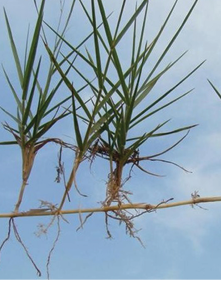
You can help stop the invasion!
- Don’t plant Mississippi’s “10 worst weeds.” Appealing as some may be, these plants are all notorious for invading outlying areas.
- Use nursery-raised native plants. Ask your local nursery staff for suggestions, or check out native gardening books from your local library or bookstore.
- Remove these plants from your property. If needed, contact your county Extension agent for recommended chemical control methods. Use herbicides carefully. Many herbicides are not selective and will kill all surrounding vegetation or may harm aquatic systems.
- Help control exotic plants on nearby public lands. This can be an educational and productive activity for Master
- Gardeners, scouts, 4-H clubs, and other service groups. Check with your local forest, refuge, or park for exotic plant removal projects.
More information on invasive weeds is available at these and other websites:
Mississippi State University Extension Service
U.S. Bureau of Land Management
The Global Invasive Species Team
Photo Credits
Jio: Photos by Ted Webster, USDA-ARS.
Kariba weed: Main photo by Keith Bradley, Botanist/Conservation Biologist, Bugwood.org. Inset photo by Barry Rice, sarracenia.com, Bugwood.org.
Waterthyme: Main photo by Wilfredo Robles. Inset photo by Kenneth Calcote, MDAC-BPI.
Cogongrass: Inset photo by Steve Compton, Clemson University.
Tropical soda apple: Photos by Charles Bryson.
Torpedograss: Photo by Rebekah D. Wallace, University of Georgia, Bugwood.org.
This brochure is a cooperative effort of the Mississippi State University Extension Service and Mississippi Department of Agriculture and Commerce Bureau of Plant Industry.
M1194 (06-24)
Revised by John D. Byrd Jr., PhD, Extension/Research Professor, Plant and Soil Sciences. Originally compiled by Faye Winters, District Wildlife Biologist, Bureau of Land Management; John D. Byrd Jr.; and Charles T. Bryson, Research Botanist, USDA-ARS.
The Mississippi State University Extension Service is working to ensure all web content is accessible to all users. If you need assistance accessing any of our content, please email the webteam or call 662-325-2262.

